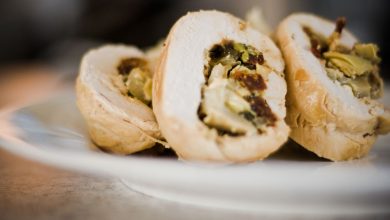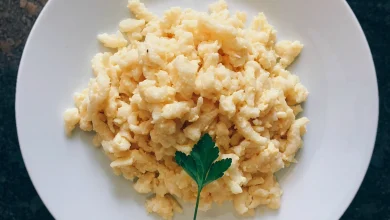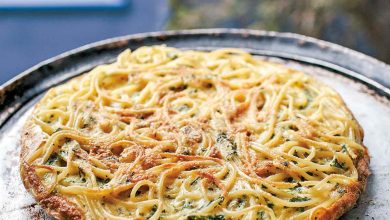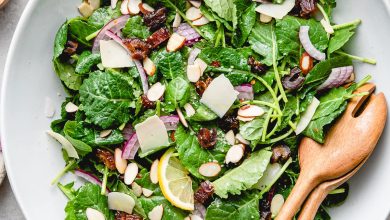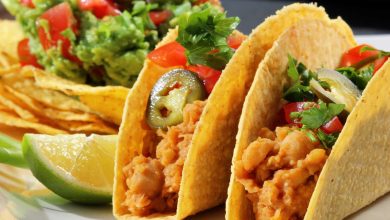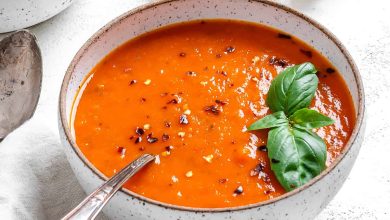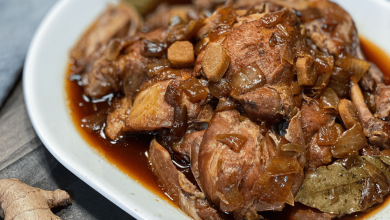Vegan Cheese, Pâté and Crackers
Certainly, I’d be happy to provide you with detailed information about Vegan Cheese, Pâté, and Crackers.
Vegan Cheese:
-
What is it? Vegan cheese is a dairy-free alternative to traditional cheese, specifically designed for individuals who follow a vegan diet or are lactose intolerant. It mimics the taste and texture of dairy cheese but is made from plant-based ingredients.
-
History: The history of vegan cheese dates back to the early 20th century when dairy-free cheese substitutes started gaining popularity among vegans and those with lactose intolerance. Over the years, the demand for vegan cheese has grown significantly, leading to a wide variety of options and flavors.
-
Components: Vegan cheese is primarily composed of plant-based ingredients. Common components include:
- Base: Soy, almond, cashew, or coconut milk.
- Thickening agents: Tapioca starch, agar-agar, or carrageenan.
- Flavorings: Nutritional yeast, spices, herbs, and even probiotics.
- Texture enhancers: Coconut oil, almond butter, or tapioca starch.
Pâté:
-
What is it? Pâté is a French dish that typically consists of finely ground and seasoned meat, but in the case of vegan pâté, it’s a plant-based alternative. Vegan pâté is rich, flavorful, and often served as a spread.
-
History: Traditional pâté has a long history in French cuisine, dating back centuries. The concept of vegan pâté emerged as part of the broader movement toward plant-based and vegetarian alternatives.
-
Components: Vegan pâté typically includes:
- Base: Beans (e.g., black beans, chickpeas), lentils, mushrooms, or nuts.
- Flavorings: Garlic, onions, herbs (like thyme or rosemary), and spices.
- Texture enhancers: Olive oil or coconut oil.
- Optional add-ins: Sun-dried tomatoes, roasted red peppers, or nutritional yeast for a cheesy flavor.
Crackers:
-
What are they? Crackers are thin, crispy baked snacks that can be made with various ingredients. They are often used as a vehicle for spreads like vegan cheese or pâté.
-
History: Crackers have a long history, with variations found in various cultures around the world. Modern crackers can be traced back to the 19th century when bakers started producing them in large quantities.
-
Components: Basic cracker ingredients include:
- Flour (usually wheat, but gluten-free options are available).
- Water.
- Fat (typically vegetable oil or butter for non-vegan options).
- Salt.
- Optional seasonings: Sesame seeds, herbs, or spices.
Steps to Prepare Vegan Cheese, Pâté, and Crackers:
The preparation time can vary depending on the specific recipes you choose. Here’s a general outline of the steps:
Vegan Cheese:
- Blend the chosen base (e.g., soaked cashews) with plant milk, nutritional yeast, and seasonings until smooth.
- Heat the mixture on the stove while stirring in agar-agar or tapioca starch to thicken it.
- Pour the mixture into molds and refrigerate until set (usually a few hours).
Vegan Pâté:
- Sauté onions, garlic, and chosen vegetables or legumes until soft and flavorful.
- Blend the sautéed mixture with herbs, spices, and optional add-ins until smooth.
- Chill the pâté in the refrigerator for a few hours to allow the flavors to meld.
Crackers:
- Combine flour, water, fat, salt, and any seasonings in a mixing bowl.
- Knead the dough until it’s smooth and cohesive.
- Roll out the dough, cut it into desired shapes, and bake in a preheated oven until golden and crispy (usually 10-15 minutes).
Total Preparation Time: The time required can vary, but on average, you can prepare all three components within 2-3 hours, including chilling and baking times.
I hope you find this information helpful for your culinary endeavors. If you’d like specific recipes for any of these components, please let me know, and I can provide them in detail.
Certainly, here are the nutrition facts and health information for Vegan Cheese, Pâté, and Crackers:
Vegan Cheese:
- Nutrition Facts (Per Serving, Approx. 1 oz):
- Calories: 60-80 kcal
- Protein: 1-3 grams
- Fat: 4-6 grams
- Carbohydrates: 4-5 grams
- Fiber: 0-1 gram
- Calcium: 5-10% DV (Daily Value)
Health Information:
- Vegan cheese is typically lower in saturated fat and cholesterol compared to dairy cheese.
- It’s a good source of plant-based protein and may contain essential nutrients like B vitamins and minerals.
- Nutritional value can vary depending on the base ingredient used (e.g., cashews, almonds, soy).
Vegan Pâté:
- Nutrition Facts (Per Serving, Approx. 2 tbsp):
- Calories: 40-60 kcal
- Protein: 1-3 grams
- Fat: 3-5 grams
- Carbohydrates: 2-4 grams
- Fiber: 1-2 grams
Health Information:
- Vegan pâté is low in saturated fat and cholesterol compared to traditional meat-based pâté.
- It provides plant-based protein, dietary fiber, and various vitamins and minerals, depending on the ingredients used.
- It’s suitable for individuals following a vegetarian or vegan diet.
Crackers:
- Nutrition Facts (Per Serving, Approx. 6 crackers):
- Calories: 60-80 kcal
- Protein: 1-2 grams
- Fat: 2-4 grams
- Carbohydrates: 10-15 grams
- Fiber: 1-2 grams
Health Information:
- Crackers are typically low in saturated fat and cholesterol.
- They provide carbohydrates for energy and a small amount of protein.
- Choose whole grain or whole wheat crackers for added fiber and nutrients.
General Health Considerations:
- Vegan cheese, pâté, and crackers are suitable options for individuals with lactose intolerance or following a vegan diet.
- They can be part of a balanced diet when consumed in moderation.
- It’s essential to choose whole-food ingredients and minimize added sugars and excessive salt for optimal health benefits.
- Homemade versions of these items allow for better control of ingredients and nutrition.
Please note that the exact nutrition content may vary depending on the specific recipes and brands used. Always check product labels and consider individual dietary needs and preferences when incorporating these items into your diet.

